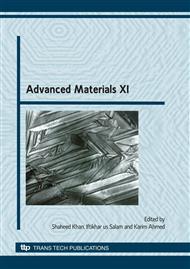p.236
p.242
p.250
p.255
p.263
p.268
p.275
p.283
p.294
Development of NdFeB Magnet through Hydrogen Decrepitation
Abstract:
Neodymium based magnets are the powerful permanent magnet of today. This paper will discuss iron based rare earth magnets. NdFeB sintered magnet material has been developed. The magnets are produced by powder metallurgy route involving hydrogen decrepitation technique for making fine powder. After melting and casting, the NdFeB alloy is subject to hydrogen atmosphere. Hydrogen slowly absorbs into the solid alloy and makes it brittle, which upon milling becomes fine powder. Hydrogen is then removed by placing the powder at temperature around 800°C under vacuum. Then the powders are pressed under isostatic conditions and sintered at temperature range of 1020–1050°C. Post sintering is done at 800°C and 580°C followed by quenching. Energy product in the range of 8 MGOe is achieved.
Info:
Periodical:
Pages:
263-267
Citation:
Online since:
June 2010
Authors:
Keywords:
Price:
Сopyright:
© 2010 Trans Tech Publications Ltd. All Rights Reserved
Share:
Citation:


